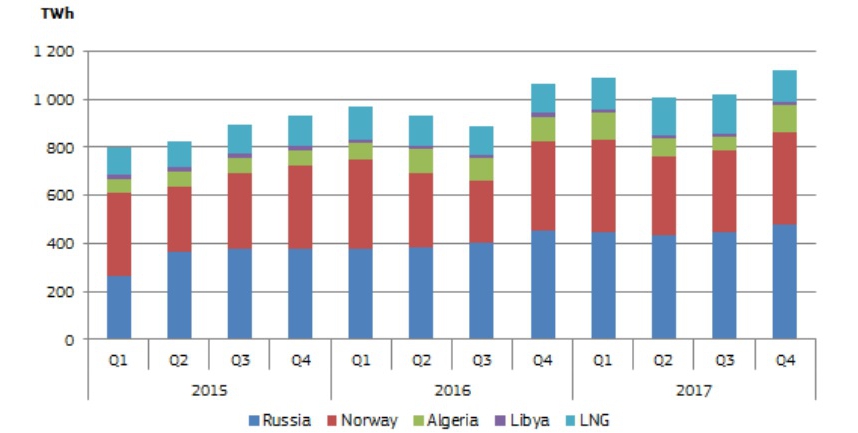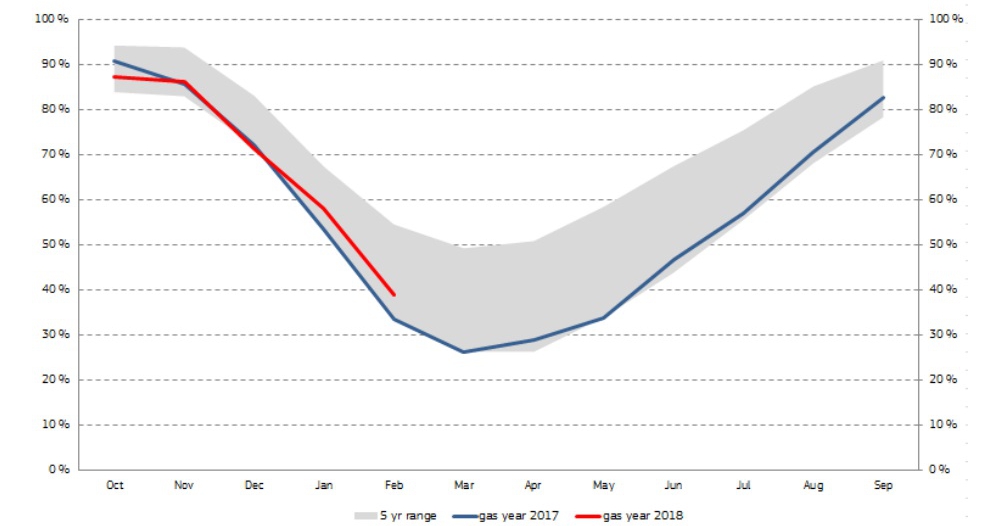Europe's 2017 Gas Demand Hits 6-yr Record
The European Union used more gas in 2017 than in any year since 2010, the European Commission (EC) announced March 26 as it published its 4Q gas report. That was despite a 2% year-on-year drop in Q4, as relatively mild weather reduced demand for space heating. Total demand for the year was 491bn m³, 6% more than in 2016.
The biggest declines were observed in Denmark (-17%), Finland (-16%), Latvia (-13%) and Sweden (-17%), reflecting relatively high temperatures in northern Europe. The demand of the two largest consumers, Germany and the UK, fell by 6% and 3%, respectively.
EU Q4 gas production declined by 5% on the year to 35bn m³. Dutch production fell by 10% which was partly offset by increases in Denmark (4%), Romania (6%) and the UK (1%), which would have been more but for the closure of the Forties pipeline system in the North Sea during 11-30 December. The pipeline connects 85 oil and gas fields to the British mainland and transports around 40% of the UK’s oil and gas production. To address the disruption, the UK increased pipeline imports from the continent. In 2017 as a whole, EU gas production amounted to 128bn m³, 3% less than in 2016.
Europe Q4 net imports increased by 6% on 2016. The Netherlands was the main contributor to this increase, considering that the country's net exports were nearly 3bn m³ lower than in the same period of 2016. Among the biggest EU gas markets, the net imports of Germany and France increased by 2% and 1%, respectively, those of Italy were flat, while those of the UK fell by 4% year-on-year. As a whole, net imports were 11% higher than in 2016.
EU imports of natural gas by source, 2015-2017
In 2017 as a whole, pipeline imports from Russia rose 12% compared with 2016, reaching a record level of gas supplies to the EU.
However, the first train of Russia’s largest privately owned gas giant Novatek's Yamal LNG project started up in 5 December 2017, providing a new supply route for Russian gas for this year. The plant's current capacity is 5.5mn mt/yr.
Storage
EU storage capacity amounted to 1,066 TWh (roughly 100bn m³) on 31 December 2017. Between April and August 2017, the average utilisation rate in the EU remained close to the bottom of the five-year range and 5-10% lower than a year earlier. By the end of summer, September 30, the average level was 85% full, compared with 90% a year earlier.
In the fourth quarter of 2017, withdrawals were lower than in the same period of 2016, driven by milder temperatures. On December 31, the average percentage filled was 65%. This is 1 percentage point higher than a year earlier but close to the lower end of the 5-year range.
Gas storage levels as percentage of maximum gas storage capacity in the EU




